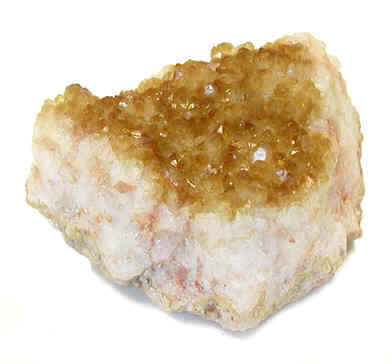Citrine

Citrine, like amethyst, is a type of quartz that owes its color to background radiation. The latter is primarily from the naturally occurring potassium-40 and members of the uranium and thorium decay series found in rocks and soil. As is true for amethyst, the formation of citrine requires the presence of trace amounts of iron impurities in the quartz. The difference between citrine and amethyst is the oxidation state of the iron: Fe+3 in citrine and Fe+4 in amethyst.
Citrine is often produced artificially by heat treating amethyst, a process that reduces the oxidation state of the iron. In some cases, the amethyst is first produced by exposing iron containing quartz to gamma radiation, and then heat treating the result.
The color of the citrine produced in this fashion can range from a gold to a brown or red.
Donated by Paul Frame.
